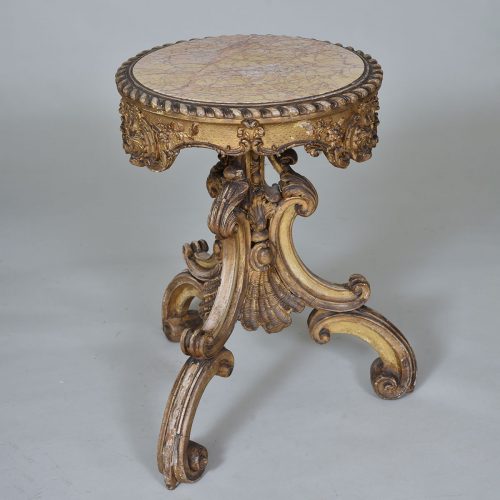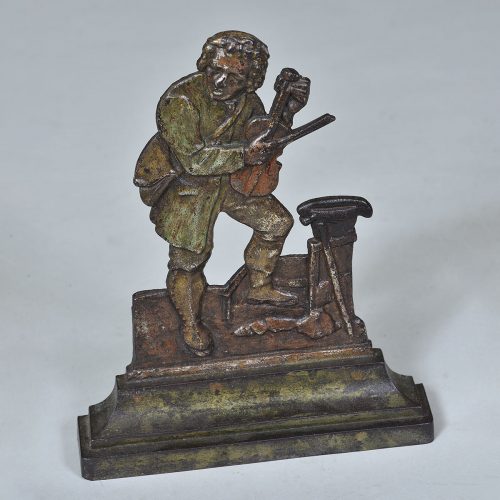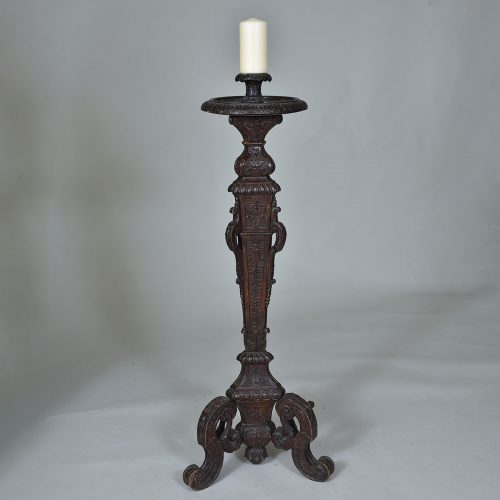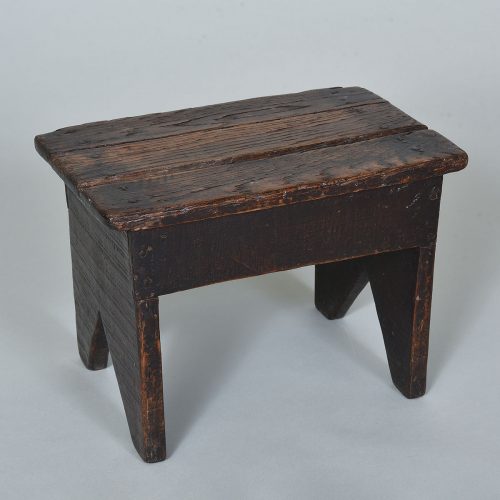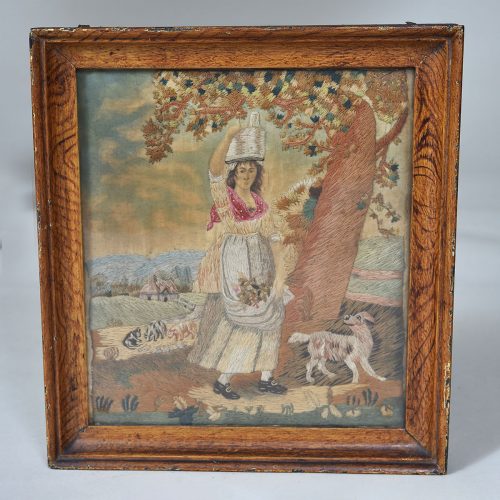Current Stock
-
.SOLD
19th century Brass Stick Stand
£425.0019th century Brass stick or umbrella stand with six sections and lift out drip tray. Width: 15" / 38 cms Depth: 9" / 23 cms Height: 24" / 61 cms -
19th century Italian carved and painted table, with a central tripod base. The round top with a carved edge and marble inset top. Width: 16" / 41 cms Depth: 16" / 41 cms Height: 24" / 61 cm
-
19th century Copper Pan
£85.00Small 19th century copper and iron brandy or nursery pan in lovely condition. Seamed. Length: 8" / 20 cms Height: 3.5" / 9cms -
19th century Folk Art Doorstop
£175.0019th century folk art doorstop with original polychrome paint of a street musician. Possibly 'Jack of Knaresborough'. Width: 9" / 23 cms Height: 11" / 28 cms -
19th century salt glazed, stoneware flagon with incised decoration. Height: 12" / 30 cms
-
19th century Torchère
£495.0019th century carved Italian torchere. Very decorative in style and well carved Height: 47" / 120 cms Width at Base: 18" / 46 cms -
Collection of three Doulton Lambeth glazed stoneware 'harvest jugs'. Some minor chips. Graduated sizes Height: 8" / 20 cms Height: 7.5" / 19 cms Height: 6.5" / 16 cms
-
Arts and Crafts Treen Vessel
£68.00Arts and Crafts treen vessel with carved initials. Would make a lovely desk piece Height: 5.5" / 14 cms -
19th century Stool
£98.0019th century Stool with patinated saw marks to both ends. Sometimes called a creepie stool Width: 14" / 35 cms Depth: 9.5" / 24 cms Height: 10" / 25 cms -
Folk Art Needlework
£295.0019th century folk art needlework in wool and silk or a girl gathering flowers in the fields with her dog, a cottage in the background with cattle in the meadows. In charming, original scumbled frame Width: 12" / 30 cms Height: 13.5" / 34 cms -
Italian carved and painted base suitable for a coffee table. As is. Width: 19" / 49 cms Depth: 19" / 48 cms Height: 16" / 41 cms
-
Late 19th century Oak Box
£165.00Late 19th century Oak box on bracket feet with brass carrying handles and escutcheon Width: 15.5" / 39cms Depth: 11" / 28 cms Height: 10.5" / 26 cms



